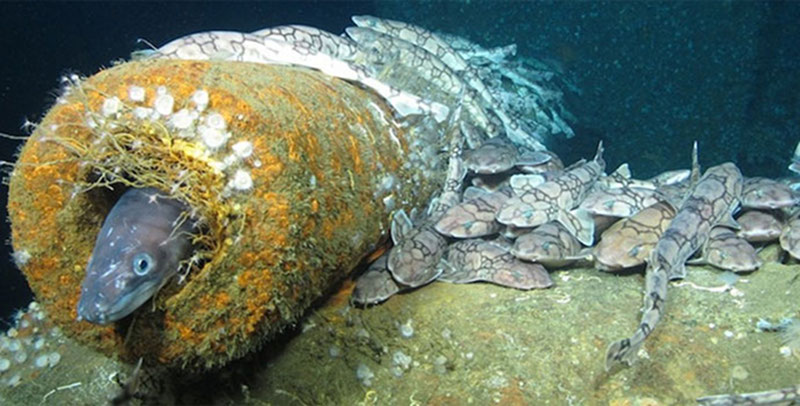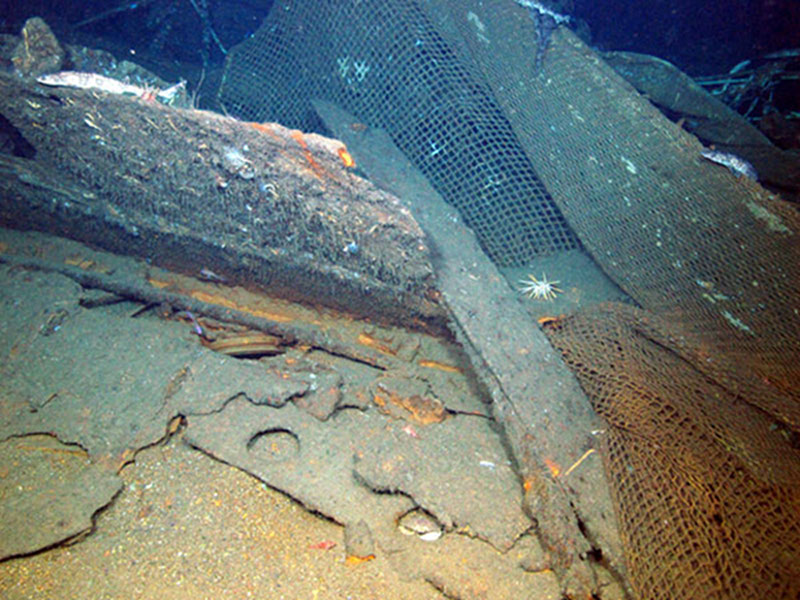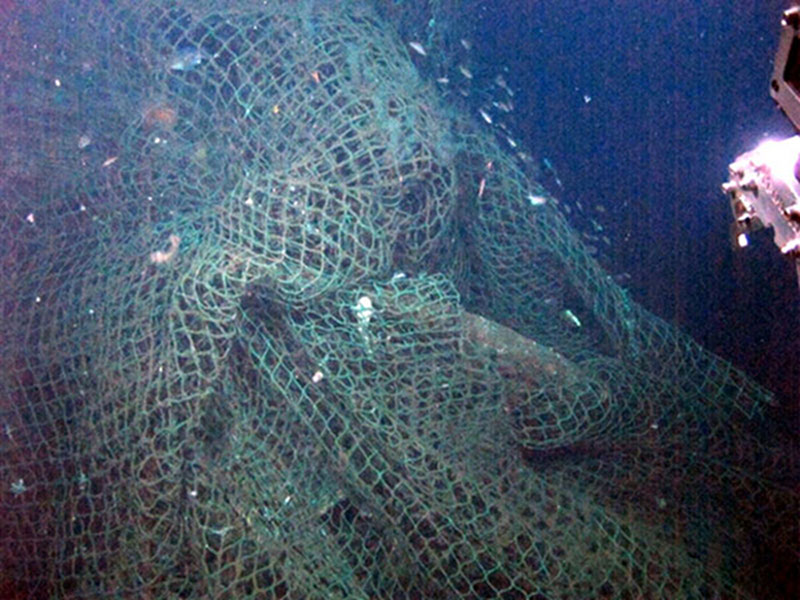
By Rod Mather, Co-Chief Scientist (Leg 3) - University of Rhode Island
September 26, 2012

One of the cruiser Frankfurt’s 150 millimeter guns with the gun turret lying on its side in the background. Image courtesy of Deepwater Canyons 2012 Expedition, NOAA-OER/BOEM. Download image (jpg, 96 KB).
As an archaeologist, finding a shipwreck is often a process rather than an event. When can you say you have found it? Is it the moment when you notice something in the acoustic survey data, or perhaps when you first see it with your eyes, underwater or on video? Maybe it is when you are pretty sure you can offer a solid identification? Or perhaps you can only say you have found a shipwreck when you can prove the point unequivocally to your peers and the public?
Can you only say you have found a shipwreck when you know for certain that nobody else has found it before? What if the ship was never really “lost?“ What if documents in the historical archives demonstrate that it was government property and suggest its probable location?

Still under attack! One of the Billy Mitchell shipwrecks damaged by fishing gear. Image courtesy of Deepwater Canyons 2012 Expedition, NOAA-OER/BOEM. Download image (jpg, 148 KB).
When you are searching for a “lost“ fleet of historically important, powerful German warships sunk by General Billy Mitchell, the charismatic “founder“ of the United States Air Force, the problems become more complicated. Do you have to find all the ships or just some of them?
Fellow archaeologist Gordon Watts and I first started the process of finding and studying the “Billy Mitchell Fleet“ many years ago, initially by accident, then by design. NOAA and the Bureau of Ocean Energy Management (BOEM) have now helped bring that process to a conclusion. Along the way, the crews of the University of Rhode Island research vessel Endeavor and the NOAA Ships Thomas Jefferson and Nancy Foster helped immeasurably, as did NOAA archaeologist Frank Cantelas and BOEM archaeologist Jack Irion (currently at sea with us).
As the process of finding these particular shipwrecks draws to a conclusion, we now know the identity, location, threats, and condition of the Billy Mitchell fleet. That fleet includes an incredible battleship, the Ostfriesland, which fought the British Grand Fleet at Jutland and now sits upside down on the bottom of the ocean - her powerful 12-inch-gun turrets supporting her heavily armored hull. It also includes a formidable cruiser, the Frankfurt, which saw action in every major naval battle of the First World War and now sits in more than 400 feet of water, providing a home to thousands of catsharks and dozens of conger eels.

Still under attack! One of the Billy Mitchell shipwrecks damaged by fishing gear. Image courtesy of Deepwater Canyons 2012 Expedition, NOAA-OER/BOEM. Download image (jpg, 132 KB).
In truth, the destroyers and U-boats are no less interesting or remarkable. They too saw extensive action in World War I, operated all over the Atlantic and, as with their larger companions, finally fell victim to a series of United States Army Air Service and Navy bombing experiments in 1921, orchestrated by Mitchell.
Armed with Martin BM2 biplanes, the General’s mission was to prove that “air power“ would change the face of warfare, end the battleship era, and force the American government into creating a separate Air Force. Although the experiments were controversial, the results were undeniable. Mitchell sunk all the warships he was allowed to attack, including the Ostfriesland. Just as important, he won the media campaign and propaganda war. In the press and public opinion, Mitchell looked progressive; the Navy looked obstructionist and old fashioned.
Although the remains of the German warships we are studying off Virginia are elegant, fascinating, and hold an important place in our history, they are still being attacked. While they are relatively deep, certainly hazardous and mostly devoid of retrievable artifacts, we have evidence that divers have damaged some of them. Worse still is the extensive damage from expensive, heavy trawl gear.
One of our objectives now is to assess that damage and to try and find a way to preserve these iconic shipwrecks that hold a special place in our nautical, aviation, and military history. So while the process of finding these wrecks to archaeological standards is complete, the science, policy, and management work has only just begun.